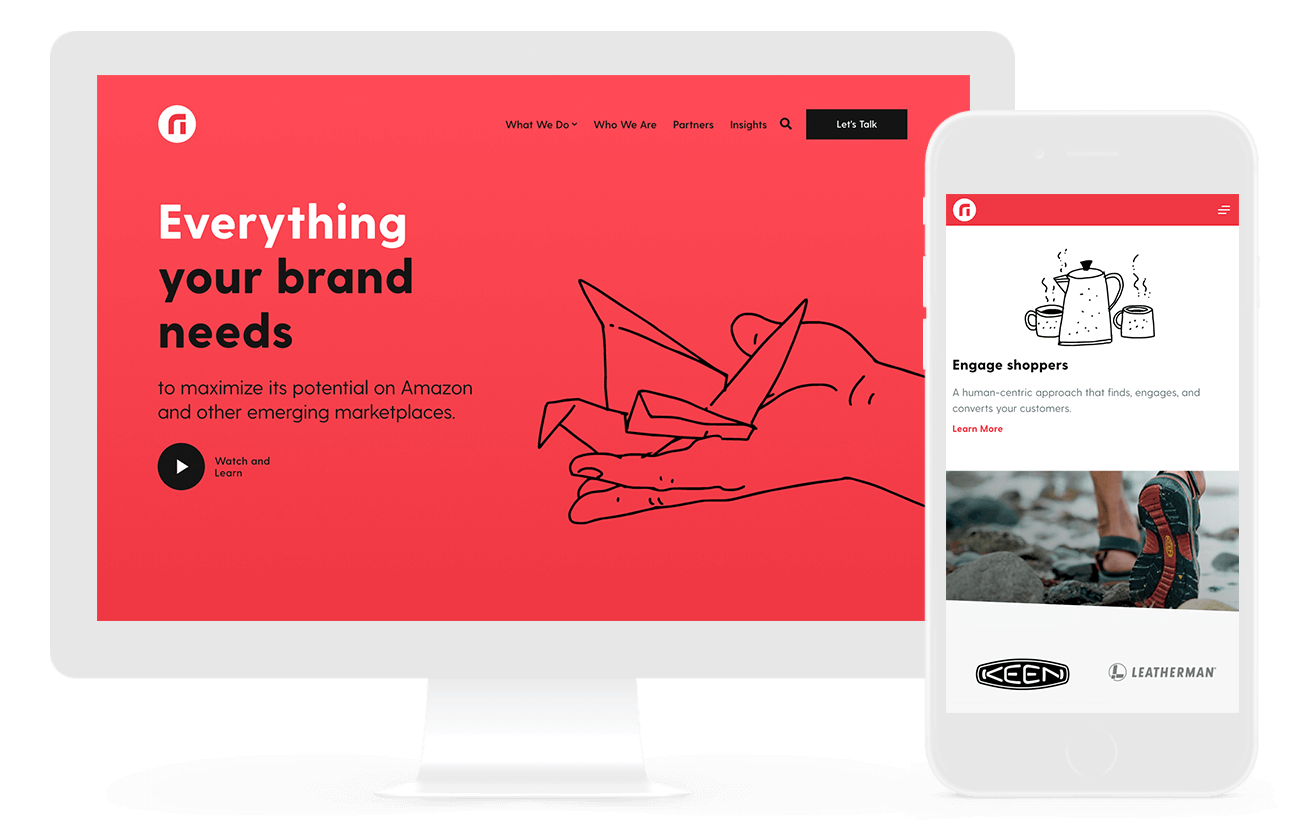All Categories
Featured
Table of Contents
- – Web Development Bachelor's Degree - Full Sail ...
- – 12 Essential Tips For Improving Your Web Desi...
- – Awwwards - Website Awards - Best Web Design T...
- – The Top 10 Most Important Elements Of A Websi...
- – Top Web Design Agencies Ranked - 2022 Reviews...
- – What Is A Web Designer? (2022 Guide) - Brains...
- – Web Design Scholarship - Nyc Digital Marketi...
- – Web Design Tools & Software - Webflow Tips a...
- – Web Design Studio & Digital Marketing Agency...
- – Web Design Scholarship - Nyc Digital Marketi...
- – Mrw Web Design - Wordpress Websites For Nonp...
Web Development Bachelor's Degree - Full Sail University Tips and Tricks:
Quick summary Functionality and the energy, not the visual style, identify the success or failure of a site. Considering that the visitor of the page is the only individual who clicks the mouse and for that reason decides everything, user-centric design has actually developed as a standard method for successful and profit-oriented website design - web design frederick md.
and the utility, not the visual style, figure out the success or failure of a site. Because the visitor of the page is the only individual who clicks the mouse and therefore chooses everything, user-centric design has become a basic technique for effective and profit-oriented website design. After all, if users can't use a feature, it may as well not exist.
g. where the search box need to be positioned) as it has already been carried out in a number of posts; instead we concentrate on the methods which, utilized correctly, can result in more sophisticated style decisions and simplify the procedure of viewing provided information. Please observe that you might be thinking about the usability-related articles we have actually published before: Principles Of Good Website Style And Reliable Website Design Guidelines, In order to utilize the concepts appropriately we first require to understand how users engage with sites, how they think and what are the standard patterns of users' behavior.
12 Essential Tips For Improving Your Web Design In 2022 Tips and Tricks:
Visitors glance at each new page, scan some of the text, and click on the first link that catches their interest or vaguely resembles the thing they're searching for. In fact, there are big parts of the page they don't even take a look at. A lot of users search for something interesting (or useful) and clickable; as quickly as some appealing prospects are discovered, users click.
If a page provides users with premium content, they are prepared to compromise the content with ads and the style of the website. This is the reason that not-that-well-designed sites with premium material get a great deal of traffic over years. Content is more crucial than the design which supports it.

Users do not check out, they scan. Notice how "hot" locations abrupt in the middle of sentences. This is normal for the scanning process. Very basic concept: If a website isn't able to meet users' expectations, then designer stopped working to get his job done appropriately and the business loses cash. The greater is the cognitive load and the less intuitive is the navigation, the more willing are users to leave the site and search for alternatives.
Awwwards - Website Awards - Best Web Design Trends Tips and Tricks:
Neither do they scan webpage in a direct style, going sequentially from one site section to another one. Instead users satisfice; they choose the very first sensible choice. As soon as they discover a link that appears like it may result in the objective, there is an excellent chance that it will be right away clicked.
It doesn't matter to us if we comprehend how things work, as long as we can use them. If your audience is going to act like you're creating signboard, then design terrific signboards." Users wish to have the ability to control their browser and rely on the constant data discussion throughout the site.
If the navigation and website architecture aren't user-friendly, the number of question marks grows and makes it harder for users to comprehend how the system works and how to obtain from point A to point B. A clear structure, moderate visual ideas and easily identifiable links can assist users to find their course to their objective.
The Top 10 Most Important Elements Of A Website Design Tips and Tricks:

Because users tend to explore websites according to the "F"-pattern, these 3 declarations would be the first elements users will see on the page once it is loaded. The design itself is easy and intuitive, to comprehend what the page is about the user needs to browse for the response.
Once you have actually achieved this, you can communicate why the system works and how users can benefit from it. People won't use your website if they can't find their way around it. 2. Do Not Squander Users' Patience, In every job when you are going to provide your visitors some service or tool, try to keep your user requirements minimal.
Newbie visitors are ready to, not filling long web kinds for an account they might never use in the future. Let users check out the website and find your services without forcing them into sharing private data. It's not sensible to force users to go into an e-mail address to check the feature.
Top Web Design Agencies Ranked - 2022 Reviews - Clutch.co Tips and Tricks:
Stikkit is a perfect example for an easy to use service which requires almost nothing from the visitor which is inconspicuous and reassuring. And that's what you desire your users to feel on your web site. Obviously, Mite requires more. The registration can be done in less than 30 seconds as the type has horizontal orientation, the user doesn't even require to scroll the page.
A user registration alone is sufficient of an obstacle to user navigation to cut down on incoming traffic. Handle To Focus Users' Attention, As websites provide both static and vibrant content, some aspects of the user interface draw in attention more than others do.
Focusing users' attention to specific locations of the website with a moderate usage of visual components can assist your visitors to receive from point A to point B without thinking of how it actually is supposed to be done. The less question marks visitors have, the they have and the more trust they can establish towards the business the site represents.
What Is A Web Designer? (2022 Guide) - Brainstation® Tips and Tricks:
Make Every Effort For Feature Exposure, Modern web designs are generally slammed due to their method of directing users with aesthetically appealing 1-2-3-done-steps, big buttons with visual results and so on. From the design point of view these aspects actually aren't a bad thing.
The site has 9 primary navigation options which are noticeable at the first glimpse. What matters is that the material is well-understood and visitors feel comfortable with the way they interact with the system.
Instead a cost: just what visitors are looking for. An optimal solution for reliable writing is touse brief and concise phrases (come to the point as quickly as possible), usage scannable design (categorize the content, use several heading levels, utilize visual components and bulleted lists which break the flow of consistent text blocks), usage plain and objective language (a promotion does not require to sound like ad; provide your users some sensible and objective factor why they must utilize your service or stay on your website)6.
Web Design Scholarship - Nyc Digital Marketing Agency Tips and Tricks:
Users are rarely on a site to enjoy the style; furthermore, for the most part they are looking for the information in spite of the design - web design frederick md. Pursue simpleness rather of intricacy. From the visitors' viewpoint, the very best website design is a pure text, with no ads or more content blocks matching precisely the question visitors utilized or the material they've been trying to find.
Finch clearly provides the details about the site and offers visitors a choice of choices without overcrowding them with unneeded material. Not only does it help to for the visitors, but it makes it possible to perceive the information presented on the screen.
Complex structures are more difficult to check out, scan, examine and work with. If you have the choice in between separating 2 style segments by a visible line or by some whitespace, it's generally much better to utilize the whitespace service. (Simon's Law): the much better you manage to offer users with a sense of visual hierarchy, the much easier your content will be to view.
Web Design Tools & Software - Webflow Tips and Tricks:
The same conventions and rules must be used to all elements.: do the most with the least quantity of hints and visual components. Clarity: all elements must be designed so their significance is not unclear.
Conventions Are Our Buddies, Standard style of site components doesn't result in a dull website. As they reduce the finding out curve, the need to figure out how things work. For example, it would be an usability nightmare if all websites had different visual presentation of RSS-feeds. That's not that different from our routine life where we tend to get utilized to fundamental principles of how we arrange information (folders) or do shopping (positioning of products).
understand what they're getting out of a website navigation, text structure, search positioning etc. A normal example from usability sessions is to translate the page in Japanese (presuming your web users do not know Japanese, e. g. with Babelfish) and offer your use testers with a job to find something in the page of different language.
Web Design Studio & Digital Marketing Agency • Gravitate Tips and Tricks:
Steve Krug recommends that it's better to, but make the most of conventions when you don't. 10. Test Early, Test Often, This so-called TETO-principle ought to be used to every website design task as functionality tests frequently provide into significant issues and issues connected to an offered design. Test not too late, not too little and not for the wrong reasons.
Some essential points to remember: according to Steve Krug, and testing one user early in the job is much better than screening 50 near the end. Accoring to Boehm's very first law, errors are most regular throughout requirements and style activities and are the more expensive the later they are eliminated.
That indicates that you develop something, test it, fix it and after that check it again. There may be problems which have not been discovered during the very first round as users were practically blocked by other issues. usability tests. Either you'll be pointed to the issues you have or you'll be indicated the absence of significant style flaws which remains in both cases an useful insight for your task.
Web Design Scholarship - Nyc Digital Marketing Agency Tips and Tricks:

This holds for designers. After you have actually dealt with a website for few weeks, you can't observe it from a fresh viewpoint any longer. You understand how it is developed and for that reason you know exactly how it works you have the wisdom independent testers and visitors of your website wouldn't have.
It can be linked to other areas such as graphic design, user experience, and multimedia arts, however is more aptly seen from a technological viewpoint. It has ended up being a large part of people's daily lives. It is hard to picture the Internet without animated graphics, various designs of typography, background, videos and music.

Throughout 1991 to 1993 the Internet was born. Text-only pages could be seen using a simple line-mode internet browser. In 1993 Marc Andreessen and Eric Bina, developed the Mosaic web browser. At the time there were several web browsers, however most of them were Unix-based and naturally text heavy. There had actually been no integrated approach to graphic style components such as images or noises.
Mrw Web Design - Wordpress Websites For Nonprofits ... Tips and Tricks:
The W3C was produced in October 1994 to "lead the Internet to its full potential by establishing typical protocols that promote its evolution and ensure its interoperability." This discouraged any one company from monopolizing a propriety browser and programming language, which might have modified the effect of the Web as a whole.
As this has actually taken place the technology of the web has also carried on. There have actually also been substantial modifications in the method individuals use and access the web, and this has actually altered how websites are designed. Because the end of the browsers wars [] new web browsers have actually been released. Much of these are open source suggesting that they tend to have quicker advancement and are more helpful of brand-new requirements.
Learn more about Lovell Media Group LLC or TrainACETable of Contents
- – Web Development Bachelor's Degree - Full Sail ...
- – 12 Essential Tips For Improving Your Web Desi...
- – Awwwards - Website Awards - Best Web Design T...
- – The Top 10 Most Important Elements Of A Websi...
- – Top Web Design Agencies Ranked - 2022 Reviews...
- – What Is A Web Designer? (2022 Guide) - Brains...
- – Web Design Scholarship - Nyc Digital Marketi...
- – Web Design Tools & Software - Webflow Tips a...
- – Web Design Studio & Digital Marketing Agency...
- – Web Design Scholarship - Nyc Digital Marketi...
- – Mrw Web Design - Wordpress Websites For Nonp...
Latest Posts
Website Design - Best Ecommerce Web Design By Shopify Tips and Tricks:
Modern Website Designs - Best Web Page Designers Tips and Tricks:
Penner Home - Durham Web Design - Penner Web Design ... Tips and Tricks:
More
Latest Posts
Website Design - Best Ecommerce Web Design By Shopify Tips and Tricks:
Modern Website Designs - Best Web Page Designers Tips and Tricks:
Penner Home - Durham Web Design - Penner Web Design ... Tips and Tricks: